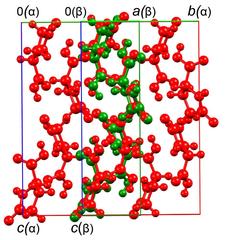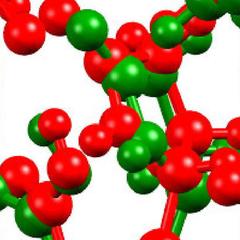URL: https://www.desy.de/news/news_search/index_eng.html
Breadcrumb Navigation
DESY News: Jumping crystals produce sound waves
News
News from the DESY research centre
Jumping crystals produce sound waves
Scientists have been fascinated by thermosalient crystals for some time: when placed on a hotplate, these inconspicuous crystals suddenly propel themselves upwards, leaping to heights several times their own length. This abrupt movement is caused by a change in the structure of the crystals. A detailed examination of this transition is very difficult because it is so rapid. Now, scientists have resorted to a new technique and discovered that immediately before altering their structure the crystals emit a sound wave, the analysis of which reveals further details about this exciting phase transition. On top of this, the researchers studied the change in the crystal structure very carefully at DESY. The international team of research scientists, headed by Panče Naumov from the New York University Abu Dhabi of the United Arab Emirates, have reported their findings in the journal Angewandte Chemie International Edition.

Structure shift in a thermosalient crystal: Upon heating, the position of the atoms shifts from red to green. Credit: Manas K. Panda/Panče Naumov, New York University Abu Dhabi
The scientists have now used a new technique to show for the first time that the crystals emit sound waves immediately before undergoing the phase transition. While heating and cooling a certain thermosalient crystal, they managed to measure several waves in the ultrasound range in the vicinity of the transition temperature (around 65 to 67 degrees Celsius on heating and 55 to 53 degrees Celsius on cooling). Normally, the transition is difficult to study with great precision because it takes place so quickly. However, the sound waves offer a means of analysing a number of properties indirectly. For example, the speed of the phase change inside the crystal can be deduced more accurately. The new phase propagates through the crystal at a speed of 2.8 metres per second (about 10 kilometres per hour). The new technique provides much better insights into the individual events occurring during the transition than is possible using other methods.

The phase change and the subsequent movement of the crystals are based on an exciting mechanism: thermal energy, that is heat, is transformed into mechanical kinetic energy. This energy conversion in crystals could be of interest for a range of applications. “Such materials could perhaps be used as temperature sensors, one day. The phase transition always occurs at a very specific temperature, at which the sensor flips, so to speak,” explains Martin Etter. “Another conceivable application is that of converting heat into electricity; but we are still a long way from achieving this.”
The scientists are also interested in these crystals for a very different reason. The phase transition takes place in exactly the same way as another process that has so far been observed mainly in metallic materials. The so-called martensitic transformation occurs when steel or certain other alloys are cooled, and displays the same properties as the transition observed in the organic crystals (organic means that they are based on carbon compounds). Measuring the sound waves was intended as a further test to demonstrate the similarity between the two transformations; because such sound waves are also produced during the martensitic transformation. The new findings therefore provide experimental evidence that thermosalient crystals are an organic counterpart to martensites, and that organic solids can behave in similar ways to metals and alloys.
The Max Planck Institute for Solid State Research in Stuttgart was also involved in this research.
Reference:
“Acoustic Emission from Organic Martensites”; Manas K. Panda, Martin Etter, Robert E. Dinnebier, Panče Naumov; Angewandte Chemie International Edition, 2017; DOI: 10.1002/anie.201702359




